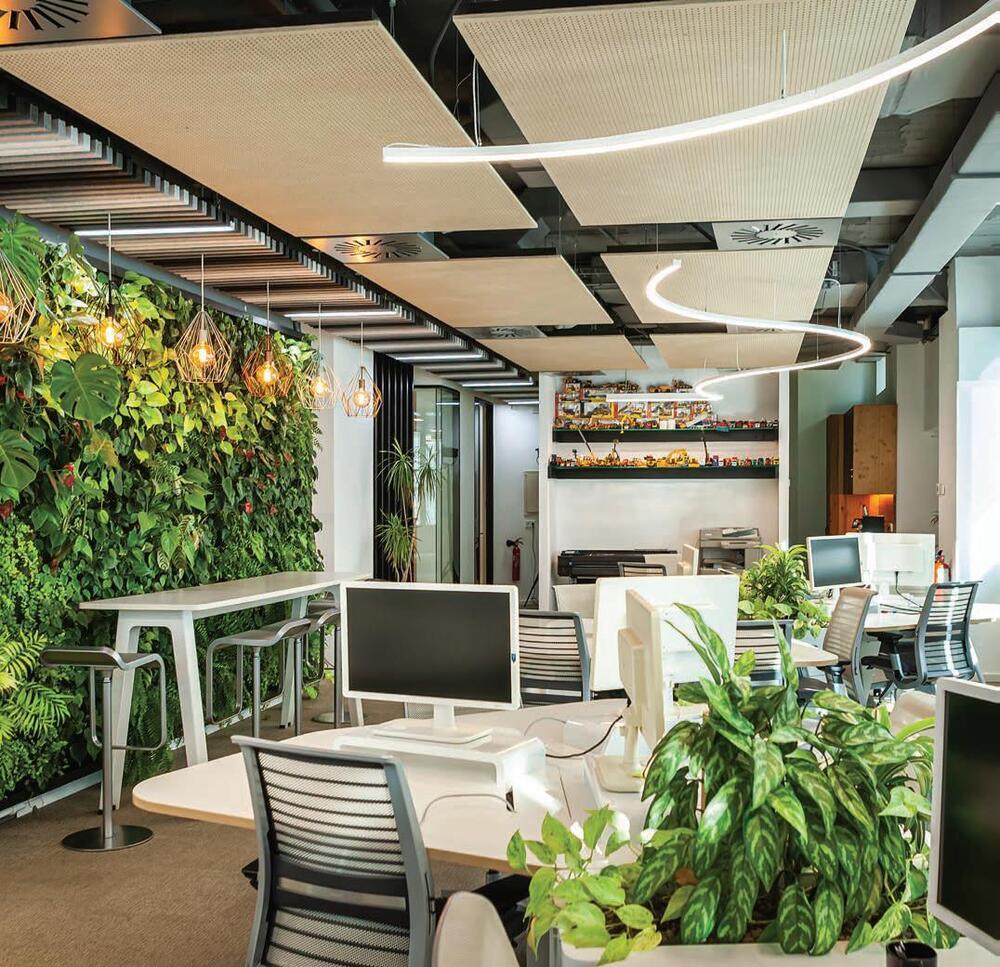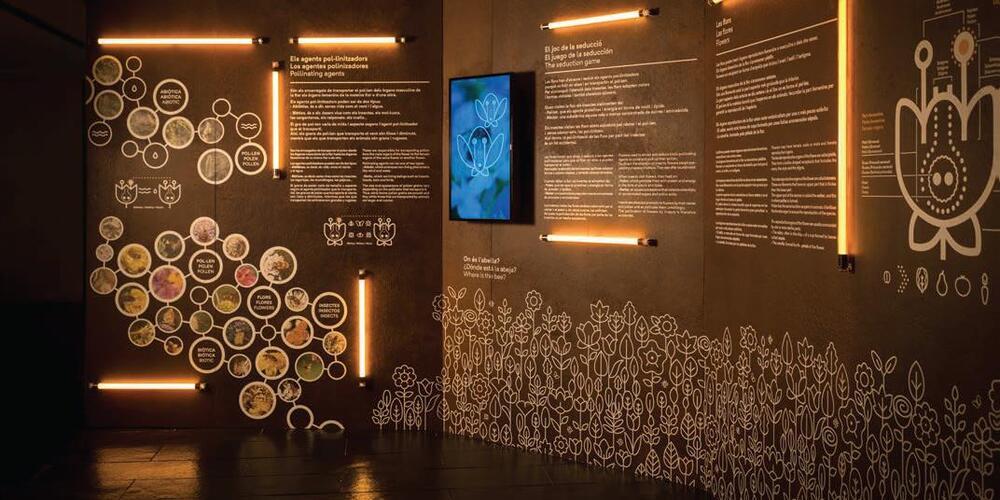Circular by design
29 May 2023Cellulose and carbon – two highly important components for industry and society to work with and to understand as, globally, we continue to look for ways to mitigate climate change and to protect the planet. Geoff Rhodes reports
In 2021 I suggested that it had probably never been more important or urgent for us to understand, explore and exploit all types of timber resources and their derivatives and to look at multiple products, their properties and benefits for the wider timber trade, and to then communicate these realities clearly to the international marketplace. Two years later, this premise remains totally valid and the necessity for innovation in materials and the speed of change is a real driver, as we witness an explosion in global population and construction needs.
Traditional raw material sources are essentially finite, and it is critical that new options emerge, which is why this updated report on the Barcelona-based company HONEXT Material SL, producers of HONEXT is timely.
In November 2022, in Sharm El-Sheikh, Egypt’s government hosted the 27th session of the Conference of the Parties of the United Nations Framework Convention on Climate Change (UNFCCC -COP 27) and was addressing issues within the construction industry specifically to effectively tackle the global challenge of climate change.
It was reported that the built environment is a primary consumer of four of the five materials that account for 55% of the world’s industrial carbon emissions. Decarbonising the built environment is urgent to reach the Paris Agreement target of keeping global warming below 1.5OC .
Today it is generally acknowledged that the sector could reduce these emissions by embracing the principles of a circular economy, including material substitution.
From the separate ‘Circularity Gap Report’ subsequently presented in January 2023 came the data showing that the planet is now home to around 8 billion people – and in sheltering, feeding, transporting, and clothing these billions, the global economy consumes a landmark 100 billion tonnes of materials per year.
By 2050 material extraction and use is expected to double relative to 2015 levels, threatening a total breakdown of Earth’s life support systems, which are already at a breaking point. Without material management strategies that keep us within planetary boundaries, the UN has warned of ‘total societal collapse’, driven by concurrent climate change disasters, economic vulnerabilities, political instabilities, and ecosystem failures.
A crucial solution to address this challenge is a circular economy: more than just recycling, increases in secondary material use must be matched by a systemic approach to smart material management that enables doing more with less, using for longer and substituting with sustainably managed regenerative materials. By upgrading to a model that maximises the value that we extract from our precious materials, we can better ensure the well-being of present and future generations, while respecting the boundaries of our planet.
The current state of circularity worldwide, total material extraction is on the rise: it more than tripled since 1970, but almost doubled since the year 2000 – reaching 100 billion tonnes today. This growth is not solely due to the global population doubling since 1970, as per-person material use has only increased by a factor of 1.7. For instance, while virgin material demand in 1970 was around 7.4 tonnes per person, far below today’s approximately 12 tonnes, this growth in per-person material demand has not been evenly distributed across countries.
Material use may outpace population growth in high income countries, while the opposite is true for lower income countries – generating a global average that doesn’t show the full picture. Ultimately, the metabolic rate of the global economy is accelerating and material extraction and consumption are growing at almost unprecedented rates, comparable to the ‘Great Acceleration’ occurring in the period after the second world war.
This is revealed by the fact that virgin material use is not set to slow down anytime soon: without urgent action, it is expected to reach 190 billion tonnes by 2060.
How can a circular economy change this picture? We measure circularity by looking at what is flowing into the economy. Today, the global economy consumes 100 billion tonnes of materials, and a portion of that consumption every year comes from secondary materials. The Circularity Metric, introduced in 2018, was the first approximation of how ‘circular’ the global economy was.
From the 2023 Circularity Gap Report also came the data that rising material extraction has shrunk global circularity from 9.1% in 2018, to 8.6% in 2020, and now 7.2% in 2023. A more holistic view on the circularity of the economy was presented and debated at Sharm El-Sheikh, looking deeper into the linear consumption that makes up the ‘Circularity Gap’. This is a topic that will continue to have more relevance.
However, Arup commented that there are many core conditions that need to be in place globally for a truly circular system in the built environment, and some are key to achieve the net zero transition. One of them is to increase the supply of and access to “circular materials”, defined as “pre-used, low or/zerocarbon and carbon negative, recyclable, or recycled”, on a global scale.
And even in this category, “re-using and recovering materials should always be the priority, in order to minimise waste and overall demand for new material”.
THE EU TAXONOMY
We are now seeing a rapidly changing context for companies’ operations, and for investors with changing legislation and policies to combat and mitigate negative climate change: The EU Taxonomy, in effect since July 2020, is a classification system establishing a list of environmentally sustainable economic activities.
It could play an important role and help the EU scale up sustainable investment and implement the European Green Deal. The EU Taxonomy will provide companies, investors and policymakers with appropriate definitions for which economic activities can be considered environmentally sustainable.
In this way, it should create security for investors, protect private investors from greenwashing, help companies to become more climate-friendly, mitigate market fragmentation and help shift investments where they are most needed. The “Transition to a circular economy” is one of the six environmental objectives.
Additionally in 2022, the World Green Building Council (WorldGBC) convened leaders from across the value chain to formulate a detailed plan for how EU policymakers and the built environment sector can work together to fully decarbonise buildings and construction by 2050.
In the project #BuildingLife, 10 European Green Building Councils are convening to deliver the European Green Deal. Both the UK and Spain are in the group spearheading this project, where “Waste and circularity” and “Sustainable finance” are two of four areas.
BARCELONA AND BEYOND
As was reported previously (WBPI October/ November 2021) and with all these dynamics in mind, HONEXT continues to develop and expand into an extremely interesting proposition.
In Barcelona, after more than 10 years research at UPC Universitat Politècnica de Catalunya (https://www.upc.edu/en), HONEXT emerged as a spin-off company bringing with it a revolutionary fibre waste reclaiming process that turns cellulose residue from the pulp and paper industry into a fully recyclable, construction-ready material, manufactured and designed for additional processing, for most applications.
By analysing sorting and classifying waste, based on its composition it has proved possible to achieve new standard FR products. Depending on its quality, HONEXT uses 0-100% for both sludge and old corrugated cardboard (OCC) as well as the use of other industrial fibres as the raw material base.
“We needed to close the loop on the cellulose life cycle and start seeing this type of fibre waste for what it really is: an untapped resource,” said Pere Merino, HONEXT chairman and co-founder.
As a result of many lab trials and experiments over these years and by an innovative approach to develop these techniques, HONEXT has now used the technology breakthroughs to combine waste raw material, using cellulose premium sludge and OCC and particular enzymes into a fibrolised cellulose-based panel. This new construction material for interior use is certified as ‘circular by design’.
Not only is the management team behind HONEXT demonstrating how innovation and biotech can offer new, truly sustainable solutions for the built environment, but the business model is also being developed to be a modular solution, and thereby quickly scalable, to be established where the waste from the pulp and paper industry is produced.
This fulfils another crucial principle of the circular economy, highly relevant for the built environment; that material re-use should be localised as much as possible, to minimise associated transport emissions, especially in areas with a lot of construction activity.
This captures the HONEXT vision in a nutshell; to upcycle waste fibres locally, enabling the circular economy for the built environment globally.
CRADLE TO CRADLE
Cradle to Cradle Products Innovation Institute certification is the most ambitious and actionable global standard yet for developing products that are safe, circular, and responsibly made. The certification process analyses and optimises aspects linked to material health, product circularity, clean air and climate protection, water and soil stewardship, and social fairness.
Beyond simply reducing waste and minimising its ecological footprint the idea behind the HONEXT board is much bigger. The company aims to develop the next generation flame retardant fibreboard using waste as raw material, which can be reused (upcycling instead of downcycling) and that can also be recycled at the end of its life, making it 100% circular.
Cradle to Cradle goes further than the three Rs principle (recycle, reuse, and reduce). This recognition has a deeper scope, as it focuses on the industrial production process and ensures that sustainability is practiced at the corporate level, in addition to protecting customers, communities and the environment.
The Cradle to Cradle concept intends to integrate a circular economy approach, which includes an evaluation of material health, material realisation, renewable energy and carbon management, water stewardship and social fairness.
Currently, HONEXT boards are Cradle to Cradle certified silver. With its new product launch it is waiting for the final confirmation of certification level, which is expected to be gold.
Designers, architects, and builders are rethinking construction approaches, bringing in circular construction practices along with the choice of innovative and sustainable materials for their projects.
The aim step-by-step is to make a complete transition to a circular economy, based on the Cradle to Cradle school of thought and design.
According to the principle ‘the nutrient remains nutrient’, all materials used should be able to circulate permanently in one of the two cycles.
At the beginning of the design process, all constructions should already be designed to be circular and demountable. Additionally, they should be collectable and separable by type of material, to allow upcycling at the end of the material’s life.
This philosophy is a part of the DNA of HONEXT and its products are certified as ‘Circular by Design’ by Cradle to Cradle , which makes them a front runner in the interior building materials market in general and in the panel category in particular.
THE FUTURE
The life cycle analysis (LCA) of HONEXT boards also brings fascinating results, with the most recent calculations showing that the product could possibly be carbon negative, from cradle to gate, rather than carbon neutral, thanks to using only waste as raw material, and producing in a closed loop system.
Proving the product carbon negative could have real value as decarbonisation of a building’s life cycle is a hot topic in the building industry right now. Also, as carbon trading becomes an important feature of our commercial world now and into the future, the trading of carbon credits can help companies and the world meet ambitious goals for reducing greenhouse gas emissions.
Production of HONEXT boards continues to be refined in the pilot plant just outside Barcelona and investment has been made leading to modifications of the forming unit in January 2023, which has led to a more consistent core configuration and improved edge consistency.
Also moving the density of the panel up to +/-600kg/m3 from +/-540kg/m3 has resulted in this appearing to be the ‘sweet spot’ for production and end users, with the panel now being not so fibrous.
Plans are also now afoot for a capital raise to fund the development of the first full scale plant, with an initial production of around 20,000m3 per year and in due course to be followed by additional plants to serve specific local areas by upcycling local industrial fibres waste into HONEXT boards for local manufacturing use.
The HONEXT board is a truly unique product, from an IP-protected biotech process that upcycles industrial waste fibre into a fully recyclable material that is free of toxic chemicals.
Through this evolution, the original vision is coming to life now with additional initiatives and new product development (NPD) as a manufactured and certified circular, flame-retardant FR panel to Euroclass FR B-s1d0, also without the use of any toxic chemical additives.
In addition, HONEXT boards are Material Health certified, which further adds to its uniqueness. For third party testing the company has used AIDIMME and for LCA and EPD work support and general circular advise, it uses EIG, headed by Ignasi Cubina, a very well-known figure in the sector.
Thanks to its innovation in biotech and with this manufacturing process HONEXT can upcycle paper sludge, the previously “worthless” residue from paper making, and create a fully recyclable material with no added emissions of volatile organic compounds (VOCs). Now flame-retardant and with competitive mechanical and thermodynamic properties, HONEXT is providing a truly sustainable, and much needed alternative for the built environment.
Currently HONEXT is working to accelerate the transition to the circular economy by internationalising this ground-breaking circular business model, which is using local waste for local production, providing a global solution.
As the company grows, the management team at HONEXT is expanding with a group of professionals bringing expertise in many fields: engineering, material science, architecture, construction, manufacturing operations, sales and marketing and financial acumen. They are led by Pere Merino, chairman; Paul Clegg (former Accsys CEO), CEO; Pol Merino, managing director; Sebel Lee, head of research and development; and Karlijn Radermaker, head of manufacturing operations and engineering.
In my opinion, for the global pulp and paper industry this is starting to look like a fascinating proposition. This could be as significant a step change in the evolution of a new source and type of panel product, as was the evolution of MDF back in the late 1960s and early 1970s.


